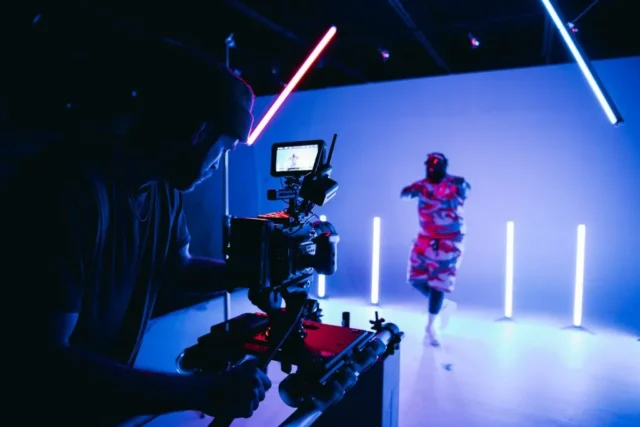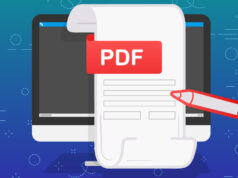
Nearly as important to creating excellent films as having gorgeous photos and engaging material is the choice of music. Music has the power to evoke strong emotions, create an atmosphere, and enhance the storyline in general. This post will outline the process for choosing music for your videos so that you may create more intriguing and eye-catching content.
Understanding the Role of Music in Videos
It’s important to understand the role that music plays in videos before going into the technicalities of how to choose music for your movies. Music may enhance the mood, tone, and emotions of your film.
It could even aid in creating a brand identity and telling a story. In contrast, a slower, more sorrowful song may be better for a movie that is more emotional or serious. For example, fast-paced, upbeat music may be perfect for a cheerful, energetic film. In a manner similar to this, the music you choose for a film you’re creating for a business or product should reflect the attitude and values of that brand.

Factors to Consider when Choosing Music for Videos
Genre and style are important factors to take into account when choosing music for your videos, as well as tempo and rhythm, instruments, lyrics, copyright, and licensing. Additionally, it’s crucial to be aware of copyright laws and licensing requirements to avoid any legal issues. One option is to use copyright free music that can be used without the need for additional permissions or fees.
Genre and style
The genre and style of music you choose will greatly depend on the type of video you’re producing and the emotion you want to convey. A music video may benefit from a more upbeat pop or rock tune, whilst a business movie might benefit from a more solemn instrumental piece.

Tempo and rhythm
Tempo and rhythm are essential elements that can greatly impact the overall feel and mood of your video. Here are some key points to consider:
- Tempo: The tempo refers to the speed or pace. A fast tempo creates a sense of energy, excitement, and urgency. It can be effective for action-packed scenes, dynamic visuals, or when you want to evoke a sense of eagerness and anticipation. On the other hand, a slow tempo can create a more relaxed, contemplative, or introspective atmosphere. It is suitable for peaceful or emotional moments, serene landscapes, or when you want to induce a sense of calm and tranquility.
- Rhythm: The rhythm refers to the patterns of beats and accents. Different rhythmic patterns can create varying moods and emotions. A lively and syncopated rhythm can add a sense of vitality, movement, and groove to your video. It works well for energetic scenes, dance sequences, or when you want to create a sense of liveliness. Conversely, a steady and regular rhythm can provide stability, consistency, and a sense of grounding.
- Syncing with Visuals: When selecting music, it is important to consider how the tempo and rhythm align with the pacing and editing of your video. Matching the beats or rhythmic elements to specific visual cues can enhance the impact and synchronization between the audio and visuals.
- Emotional Response: Both tempo and rhythm can evoke specific emotional responses from the audience. The fast-paced tempo can create excitement, urgency, and anticipation, while a slower tempo can elicit relaxation, contemplation, or sadness. The rhythmic patterns can also contribute to the overall emotional tone, such as joy, tension, or serenity.

Instrumentation
Instrumentation plays a crucial role in shaping the mood and atmosphere. By selecting specific instruments, composers and producers can create a wide range of emotions and evoke different responses from the audience. Here are some key points to consider:
- Instrument Selection: The choice of instruments can greatly influence the overall tone. Delicate instruments like piano and strings often create a sense of elegance, romance, or nostalgia. On the other hand, powerful instruments such as percussion and bass can generate excitement, energy, and intensity.
- Melodic and Harmonic Elements: The way instruments interact melodically and harmonically can shape the emotional impact. A well-crafted melody played by a specific instrument can be memorable and captivating. Harmonies created by different instruments working together can enhance the depth and richness of the composition.
- Dynamics and Expressiveness: The expressive qualities of instruments, such as the ability to play softly or loudly, can be used to convey different emotions. Gradual changes in dynamics, from soft to loud or vice versa, can create tension, anticipation, or dramatic effects.
- Timbre and Texture: Each instrument has its unique timbre, which refers to the distinct tone color or quality of its sound. Combining different timbres can result in complex and textured musical arrangements. This layering of instruments can create depth and richness in the overall sound.
Lyrics
Lyrics can significantly impact the effectiveness in your video project. Here are some key points to consider when selecting music based on the lyrics:
- Narrative and Conversation: If your video includes narration or dialogue, it is advisable to choose a song with minimal or no lyrics. This ensures that the lyrics do not compete with the spoken words, allowing the audience to focus on the intended message or conversation.
- Musical Support for Message: On the other hand, if you want to use lyrics to convey a specific message or create a particular atmosphere, selecting a song with prominent lyrics can be advantageous. The words in the song can reinforce the visual content and help express the intended emotions or storyline.
- Emotional Connection: Lyrics can evoke strong emotions and create a deeper connection between the audience and the video. By choosing a song with meaningful lyrics that align with the visuals, you can enhance the emotional impact of your project and make it more memorable.
- Cultural Relevance and Sensitivity: It is important to consider the cultural context and potential sensitivities associated with the lyrics. Ensure that the lyrics align with the intended message and are appropriate for the target audience.

Copyright and licensing
Copyright and licensing are essential considerations when selecting music for your movie. It is crucial to ensure that the music you choose is both suitable for your project and legally permitted for use. The unauthorized use of copyrighted music can result in legal consequences and financial liabilities.
To avoid copyright infringement, you should obtain proper licensing for the music you intend to use. This can be done by either securing the necessary permissions directly from the copyright holders or by acquiring licenses from music licensing agencies or libraries.
Conclusion
It’s essential to pick the correct music for your videos if you want to increase their effectiveness and engagement. It may arouse feelings, lift spirits, and build a bond with the audience.









